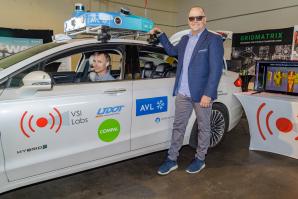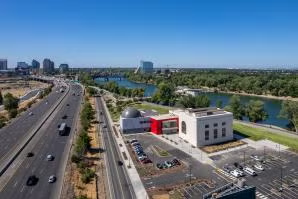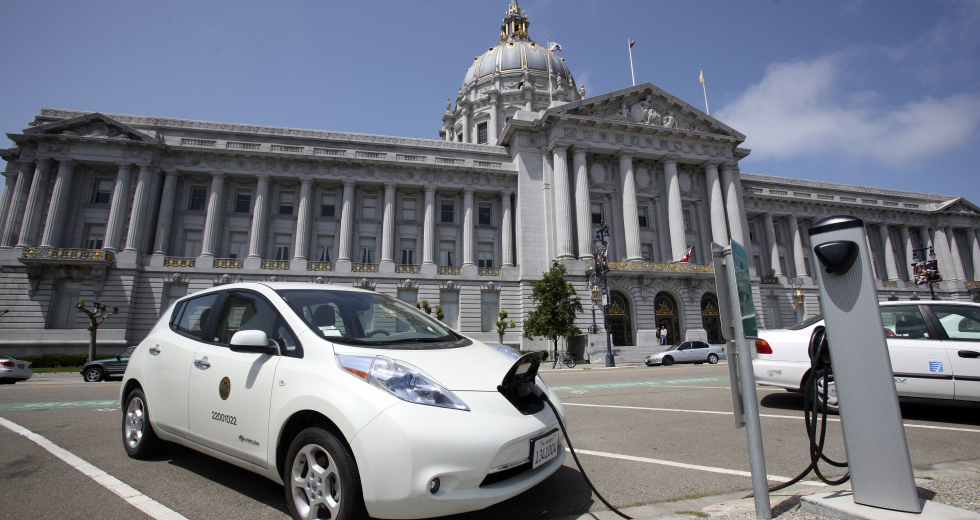Electric vehicles are on the rise, both in numbers and pricing. What was once a niche pursuit has emerged as a major growth sector in the worldwide automotive industry. There are now 4.3 million EVs in the world, and approximately 1.1 million are in California. In 2021, California registered 563,000 of them. In the United States, the EV share of the auto market is now 4.6 percent. Between 2020 and 2021, the California market grew by 32 percent.
The intersecting economics of high gas prices, worldwide inflation impacting electronic equipment and microchips, and explosive consumer demand have led to a rapid rise in dealer pricing. EVs currently range from $25,000 to $100,000, with an overall average of $65,291, according to Kelley Blue Book. That figure is $17,000 higher than the typical internal combustion engine car. As EV prices rise, the importance of EV tax credits and rebates has become critical to the market. In California, the combined federal, state, and local incentives can reach $16,000 depending on income and vehicle program restrictions. Under current rules, most California buyers can qualify for around $10,000 in credits and rebates.
On August 16, 2022, the federal guidelines for EV tax credits were dramatically transformed. On that day, President Joe Biden signed the Inflation Reduction Act, a sweeping legislation that raised corporate taxes, reduced Medicare medication costs, revised environmental programs and expanded energy tax credits. The result of the act has made qualifying for the $7,500 federal EV tax credit much more complex.
Edith Thacher, spokesperson for the Sacramento-Roseville Chapter of the Citizens Climate Lobby, a national grassroots organization that advocates for bipartisan climate legislation, summarized the environmental aspects of the new law:
“The IRA incentivizes clean energy, electric cars, and electric homes while investing in green technology to ramp up U.S. manufacturing and meet new demand. It provides a range of incentives to consumers. It is the most significant investment in climate action the U.S. has ever undertaken. The new EV credits are intended to bolster economic growth in the U.S. and make the electric vehicle more affordable to low- and moderate-income households.”
The changing rules of the EV tax credit
Prior federal rules were fairly straightforward. Before August 16, 2022, there were no income restrictions for the credit. All new EVs and plug-in hybrid electric vehicles were eligible for up to a $7,500 tax credit. The old law does not provide a federal credit for used EVs. A stipulation limiting the number of vehicles per manufacturer to 200,000 per year had become a stumbling block for some automakers, particularly high sellers Chevy and Tesla. The new law eliminates that provision on January 1, 2023.
The new law established income limits per household ($150,000 for singles, $300,000 for joint filers) and set a price ceiling of $55,000 for sedans and $80,000 for SUVs, trucks and vans. In 2023, used EVs can also receive a credit up to $4,000. The most significant change of all is the limitation of the credit by geographic location of vehicle assembly.
The IRA favors vehicles produced for final assembly in the North American Trade Zone — the U.S., Canada and Mexico. The production credentials are by vehicle identification number, which is the official tracking mechanism of the U.S. Department of Energy.
This geographic imperative, intended to generate North American jobs and sales tax income, severely limits the number of EVs that can qualify. In December 2022, there are 27 eligible new vehicles listed on the U.S. Department of Energy website. In 2023, that number will fall to five. There are also rules that apply to battery production. More than 50 percent of the battery materials must be sourced in North America. According to the Alliance for Automotive Innovation, no EV batteries currently qualify.
It may take a year for the auto industry to retool. Currently most of the raw materials and battery production occurs in Asia. The IRA set up several manufacturing incentives for raw material and battery production.
EV proponents and consumers react to the IRA
EV sales have slowed in the last quarter of 2022 as consumers navigate all the tax code changes and face rapid price increases at the dealerships. Since 1995, local consumers have an advocate in the Sacramento Electric Vehicle Association, the area chapter of the national nonprofit Electric Vehicle Association. Sac EVA has 800 members who own or lease EVs or PHEVs.
“The change in federal EV tax credits will shift EV purchasing power towards low- and median-income families,” says Guy Hall, Sac EVA board member. “For the first time there will be incentives for used EVs. There also will be substantial incentives directly to EV manufacturers to increase production of EVs and batteries in the U.S. and North America.”
Hall says that the organization’s members and others interested in fighting climate change are excited about the new IRA incentives, noting that an average gas-powered car produces more than 3 metric tons of carbon per year. “Even accounting for the carbon footprint of electrical power facilities, the electric car has 75% less emissions,” he says. Currently, however, supply is low and prices are high. “After an initial adjustment period, the EV market will return to its rapid growth,” Hall predicts.
California state and Sacramento regional EV incentives
California has had its own set of incentives for over a decade. These programs are not affected by the passage of the IRA. The three main programs that are available are the California Clean Vehicle Rebate Project, an income-based rebate up to $7,000; the California Clean Vehicle Assistance Program, which provides grants and low interest loans to lower income households; and the Sacramento AQMD Clean Cars 4 All program, which targets less-polluting older vehicles with mileage under 75,000.
The California Clean Vehicle Assistance Program is out of funds and has a massive waiting list. It is targeted at low-income households.
The California Air Quality Management’s Clean Cars 4 All has funds of up to $9,500 per lower income applicant ($83,000 for a family of four) that can be used for the purchase of EVs, PHEVs and Hydrogen Cell cars. The program can also fund home chargers. An applicant must reside in a targeted low-income zip code. The program is only active in air districts with high levels of air emission pollutants. Sacramento is one of those districts. Unfortunately, the program has closed due to insufficient reserve funds.
The California programs are financed by the state cap-and-trade system and the General Fund. The revenues from these sources have been lower during the past three years. That makes the California programs vulnerable during a declining economy.
According to Gamaliel Ortiz, a spokesperson for Sacramento Municipal Utility District, the electricity provider focuses its current efforts on charging infrastructure. SMUD offers rebates up to $1,000 on Level 2 EV charging systems for residential customers. The program has provided 1,200 units since it began. The utility also provides lower rate charging for EVs during the off-peak hours of 12 a.m. to 6 a.m. “Driving an EV at SMUD’s discounted EV rate is like paying less than $1 per gallon of gas,” says Ortiz.
The pros and cons of the Inflation Reduction Act
The nature of EV tax credits and incentives is complex and evolving. Individual consumers need to realize that the federal credits are not a universal fix for the affordability issues surrounding the move to electric cars. Due to income restrictions and detailed requirements regarding the location of assembly, each car buying decision has become unique.
Over time, the new regulations and incentives should cause vehicle costs to fall as the United States gains the capacity to build batteries and cars domestically. California buyers will have some additional incentive and rebate support from state and local agencies. There is uncertainty about the funding capacity of California programs, so buyers need to thoroughly research programs before relying on their financial resources. The future of the EV market is strong, and the advantages of EV ownership will continue to increase as gas prices remain high and the nation seeks solutions to climate change.
–
Stay up to date on business in the Capital Region: Subscribe to the Comstock’s newsletter today.
Recommended For You

Driving Toward a Zero-Emission Future
The California Mobility Center opens its Ramp-up Factory to the public
The California Mobility Center recently debuted low-emission mobility technology at a new manufacturing facility.

Energy Revolution
Emerging technologies in the Capital Region are driving efforts toward electrification of the two most polluting sectors — mobility and buildings
As energy use advances, utilities ecosystems are looking to
build the appropriate infrastructure to respond in real
time.

Startup of the Month: EV Life
Financing platform gives potential EV buyers a boost
EV Life was created to help make the cost of an electric vehicle
equal to or less than a car that runs on gas. The startup’s
founder and co-CEO explains how his business works with potential
EV buyers in three phases.

Out of the Woods
Could biomass technology help reduce megafires and build a wood-products market in California?
The process of turning wood waste into fuel not only
represents a breakthrough in the biofuels industry, but also
helps to create more resilient forests that can better
withstand wildfire.

Women in Leadership: Nicole Howard, SMUD
As part of our 2019 salute to women in leadership, we feature seven of the Capital Region’s most relevant and successful women leaders — here’s one of them.

Women in Leadership: Lora Anguay
Our annual salute to extraordinary women breaking barriers and rising to the top
Lora Anguay’s commitment to her work as SMUD’s chief zero carbon officer comes from her natural alignment with the company’s mission and community-centric values.

Historic Power Plant on Sacramento River Converted to the New SMUD Museum of Science and Curiosity
MOSAC set to open fall 2021 to teach kids and adults about STEAM in a fun and interactive way
The Sacramento Municipal Utility District Museum of Science and Curiosity revitalizes a historical landmark that will positively impact Sacramento and visitors from other communities.




Comments
Informative.
I love my Chevy Bolt EV that I purchased used and so happy to see the preferential incentives for low and moderate income households as well as for used EVs. The provisions to incentivize domestic battery material production will be a critical signal to the market to deploy and innovate here in the U.S., and hopefully to energize battery recycling infrastructure.